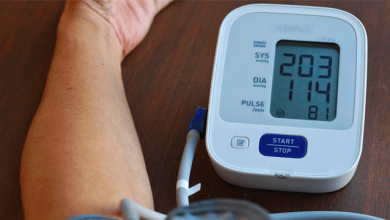Search results
Author(s):
Luis M Ruilope
Added:
3 years ago
Globally, an estimated 26.4% of the adult population suffers from hypertension, and this figure is set to rise by 3% by 2025.1 The condition is asymptomatic and is often dubbed the ‘silent killer’ because it frequently goes undetected. The clinical significance of hypertension stems from the increased risk of end organ damage due to elevated blood pressure (BP) (see Figure 1). Chronic high BP is…
View more
Author(s):
Cristina Sierra
,
Antonio Coca
Added:
3 years ago
Hypertension Treatment
The aim of antihypertensive treatment is to reduce the cardiovascular morbidity and mortality associated with high blood pressure (BP) levels by measures aimed at reducing BP levels and minimising the impact of possible associated risk factors or co-morbidities.1–5 This therapeutic goal requires previous cardiovascular risk stratification to assess the global risk of…
View more
Nocturnal Hypertension
Author(s):
Roland Asmar
,
,
,
et al
Start date:
Feb 08, 2022
Broadcast
Author(s):
Francesco P Cappuccio
Added:
3 years ago
Hypertension is a major independent risk factor for cardiovascular (CV) diseases, including cardiac death, coronary heart disease, heart failure, stroke and chronic kidney disease. Therefore, early diagnosis, prevention and optimal management of hypertension is essential.1 Hypertension poses a growing public health burden: the number of adults with elevated blood pressure (BP) increased from 594…
View more
Author(s):
Patricia Fonseca
,
Anna F Dominiczak
,
Stephen Harrap
,
et al
Added:
3 years ago
Abstract
Early combination therapy is more effective for hypertension control in high-risk patients than monotherapy, and current guidelines recommend the use of either an angiotensin-converting enzyme inhibitor (ACEI) or angiotensin II receptor blocker (ARB) for first-line therapy in patients younger than 55 years. Recent evidence shows that ACEIs reduce mortality, whereas ARBs show no apparent…
View more
Author(s):
Claudia Agabiti-Rosei
,
Anna Paini
,
Massimo Salvetti
Added:
3 years ago
Uric acid (UA) represents the final product of purine metabolism, in humans mainly regulated by the xanthine-oxidoreductase enzyme, which converts hyoxantine to xanthine and xanthine to UA. Dietary factors may influence serum UA (SUA), increasing its levels (meat, seafood, fructose, alcohol and sodium) or decreasing them (coffee and ascorbic acid). In addition, high cellular turnover conditions,…
View more
Author(s):
Mauricio Wajngarten
,
Gisele Sampaio Silva
Added:
3 years ago
Stroke is the second most common cause of mortality worldwide and the third most common cause of disability.1 Although there has been a global trend towards a reduction in stroke incidence, prevalence and mortality since the 1990s, the overall stroke burden in terms of absolute number of people affected continues to increase.2 More than 1 million people have a stroke every year in Europe and that…
View more
Author(s):
Kristian Wachtell
Added:
3 years ago
Left ventricular (LV) hypertrophy is a form of pre-clinical cardiac disease that may be induced by either pressure or volume myocardial overload, as well as genetic factors and a variety of other stimuli. Pressure overload, as exemplified by aortic stenosis, and volume overload, as exemplified by regurgitant aortic or mitral valve disease or chronic anaemia, initiates growth of cardiac myocytes…
View more
Home Blood Pressure Monitoring
Author(s):
Jacob George
,
Thomas M MacDonald
Added:
3 years ago
Article
Author(s):
Michel Burnier
Added:
3 years ago
In 2007, the European Society of Hypertension (ESH) and the European Society of Cardiology (ESC) published their guidelines for the management of arterial hypertension.1 These guidelines covered in detail all aspects of the management of hypertensive patients, from the diagnosis and detection of early subclinical organ damage to the discussion of the various therapeutic strategies in essential…
View more














